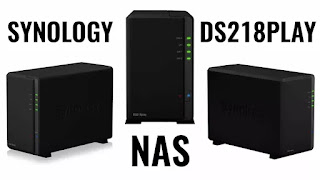NEMA 17 vs NEMA 23: Which Stepper Motor Fits Your DIY CNC Best?
When building a DIY CNC machine, selecting the right stepper motor is one of the most critical decisions you'll face. Among the most commonly used motors are NEMA 17 and NEMA 23, each offering unique advantages depending on the type and scale of your CNC project.
So how do you choose between NEMA 17 and NEMA 23? In this post, we'll compare these two stepper motors in terms of size, torque, cost, power consumption, and ideal use cases—especially for woodworking CNCs like routers, lathes, and engravers.
1. What Do "NEMA 17" and "NEMA 23" Mean?
"NEMA" stands for the National Electrical Manufacturers Association. The number (17, 23, etc.) refers to the size of the motor's faceplate measured in 1/10 inches. So:
- NEMA 17: 1.7 inches (43.2mm) square faceplate
- NEMA 23: 2.3 inches (58.4mm) square faceplate
The size also affects the motor’s torque and frame strength. Larger size generally means more torque and load capacity.
2. Torque Comparison: Power vs Precision
Torque is a key factor in CNC applications. Here's a basic comparison:
- NEMA 17: 40–50 oz-in (0.28–0.35 Nm)
- NEMA 23: 100–300 oz-in (0.7–2.1 Nm)
This means NEMA 23 motors provide at least double to quadruple the torque of NEMA 17s. This makes them better for heavy-duty applications like CNC routers that need to push through dense materials.
3. Power Supply and Driver Considerations
Higher torque comes at the cost of higher power consumption. NEMA 23 typically requires 24–48V and 2–4A, while NEMA 17 can run efficiently on 12–24V and 1–2A. Ensure that your stepper drivers (like TB6600 or DRV8825) are rated to match the chosen motor.
Also, power supply must be adequate. A NEMA 23 system may need a 24V 10A or even 36V 15A SMPS, while NEMA 17 setups can often run on 12V 5A.
4. Size and Weight Impact on Build
If you're building a compact desktop CNC or a light-duty engraving machine, NEMA 17 motors are preferred due to their small size and lightweight. For larger work areas, higher acceleration, or cutting hardwoods like oak or walnut, NEMA 23 offers better performance.
5. Cost Comparison
- NEMA 17: ~$10–$20 per motor
- NEMA 23: ~$20–$40 per motor
Though the price difference isn’t massive, NEMA 23 setups usually involve more robust hardware, stronger mounts, and higher-rated power supplies—resulting in a slightly higher total cost.
6. Ideal Use Cases
NEMA 17 is ideal for:
- Mini CNC engravers
- 3D printers
- Laser cutters
- Light-duty routers
NEMA 23 is best for:
- Medium to large CNC routers
- Wood lathes with high torque requirements
- Machines working with hardwoods
- Multi-axis setups
7. Decision Matrix: Which One Should You Choose?
| Feature | NEMA 17 | NEMA 23 |
|---|---|---|
| Torque | Low to Medium | High |
| Power Requirement | Low | High |
| Size | Compact | Larger Frame |
| Cost | Lower | Moderate |
| Use Case | Light-duty CNCs | Heavy-duty woodworking |
Conclusion: Pick Based on Your CNC Goals
Choosing between NEMA 17 and NEMA 23 depends on what your machine is intended to do. If you want a quiet, efficient, compact setup, NEMA 17 will serve you well. If you need raw power and reliability for hardwood carving or longer cutting cycles, NEMA 23 is the smarter choice.
Whichever motor you choose, pair it with the right driver, power supply, and structural support—and you’ll have a solid foundation for a successful CNC build.



